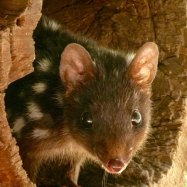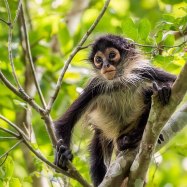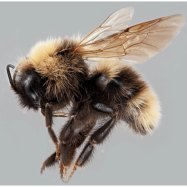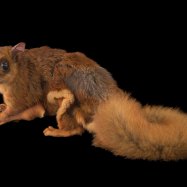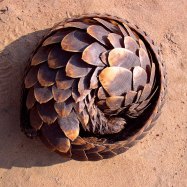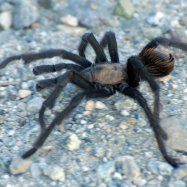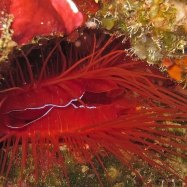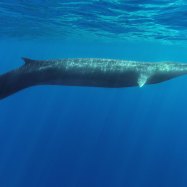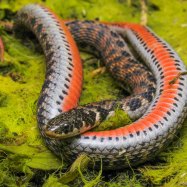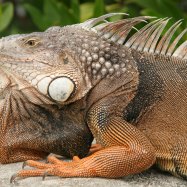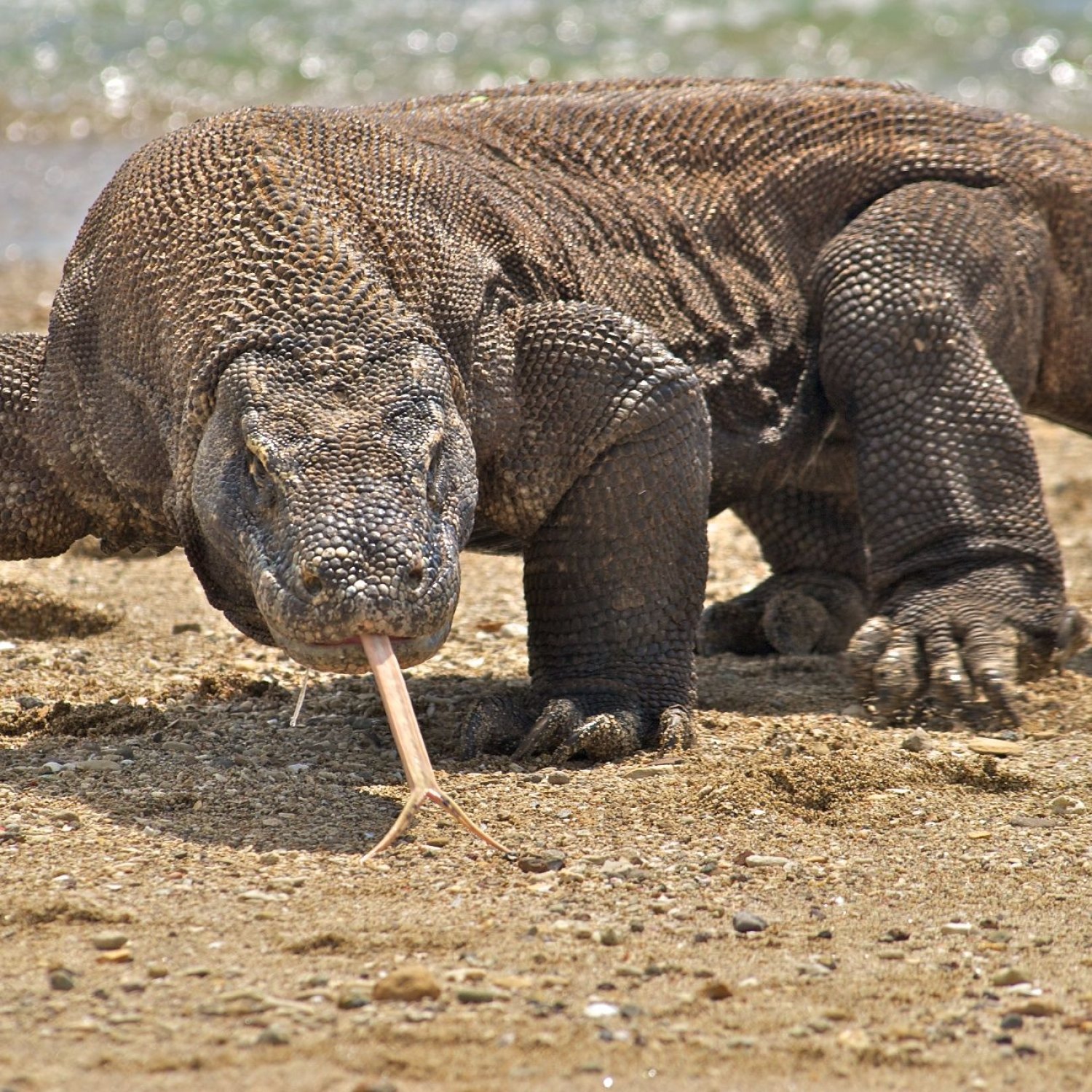
Komodo Dragon
Up to 10 feet (3 meters)
Meet the largest living lizard, the Komodo Dragon! Found in Komodo Island and nearby islands in Indonesia, these impressive creatures can grow up to 10 feet (3 meters) in length. Belonging to the Varanidae family, they have a large, elongated body and powerful limbs, making them skilled predators in their habitat. Learn more about these fascinating animals and their unique features. #KomodoDragon #Indonesia #Varanidae #LargestLizard
Animal Details Summary:
Common Name: Komodo Dragon
Kingdom: Animalia
Habitat: Tropical forests, savannas, grasslands
Komodo Dragon: The Majestic Carnivore of Indonesia
Majestic, intimidating, and downright fascinating - these are just a few words that come to mind when thinking about the Komodo dragon. With its powerful build, sharp claws, and venomous bite, it is no wonder why this creature has captured the attention of many. But what makes this giant lizard stand out from other reptiles? Let's dive into the world of the Komodo dragon and discover its unique and fascinating features.An Introduction to the Komodo Dragon
Scientifically known as Varanus komodoensis, the Komodo dragon is the largest living lizard in the world, measuring up to 10 feet (3 meters) in length and weighing up to 200 pounds (91 kilograms) Komodo Dragon. It is also commonly referred to as the Komodo monitor, land crocodile, or simply, the Komodo dragon. This carnivorous reptile is native to Indonesia, particularly found in the tropical forests, savannas, and grasslands of its country of origin.A Member of the Animal Kingdom
The Komodo dragon belongs to the kingdom Animalia, which includes all multicellular, eukaryotic organisms that share similar characteristics such as the ability to move, reproduce sexually, and obtain energy through food. This places the Komodo dragon among a diverse group of animals, ranging from insects to birds and mammals.Part of the Phylum Chordata
Belonging to the phylum Chordata, the Komodo dragon shares characteristics with most vertebrates, such as having a spinal cord and backbone. This classification also includes animals with gills or lungs, a three-chambered heart, and a closed circulatory system. The Komodo dragon's membership in this phylum highlights its close evolutionary relationship with creatures like crocodiles and snakes.Classified as a Reptile
As a reptile, the Komodo dragon falls under the class Reptilia, which includes animals with scaly skin, cold-blooded metabolism, and the ability to breathe air through lungs. These characteristics make them well-suited for a terrestrial lifestyle, and the Komodo dragon is no exception Kestrel.A Member of the Order Squamata
The order Squamata is home to various species of lizards, snakes, and worm lizards, of which the Komodo dragon is a member of. This order is further divided into two suborders: the lacertilia (lizards) and the serpentes (snakes), with the Komodo dragon falling under the former.Part of the Family Varanidae
The Komodo dragon belongs to the family Varanidae, which consists of large, predatory lizards known as monitor lizards. This family is the only group of lizards that can consume large prey, making the Komodo dragon a top predator in its habitat.The Habitat of the Komodo Dragon
The Komodo dragon is found on only a few islands in Indonesia, with its primary habitat being on Komodo Island. However, it can also be seen on the nearby Rinca, Flores, Gili Motang, and Padar islands. These areas are characterized by tropical forests, savannas, and grasslands, where the Komodo dragon can thrive due to the abundance of prey and suitable climate.The Diet of a Komodo Dragon
The Komodo dragon is a strictly carnivorous animal, with almost 80% of its diet consisting of carrion. This includes the remains of animals such as deer, pigs, and water buffalo. However, they are also skilled hunters, with their strong jaws and sharp, serrated teeth allowing them to take down prey much larger than themselves. The Komodo dragon's bite is not only powerful but also carries venom, making it a deadly predator in its habitat.The Geographical Distribution of the Komodo Dragon
The Komodo dragon is only found in one country – Indonesia. More specifically, it is commonly seen on Komodo Island and a few other surrounding islands. Its geographical distribution highlights the importance of preserving these islands and their habitats, as it is the only place in the world where this fascinating creature can be seen in the wild.The Appearance of the Komodo Dragon
The Komodo dragon's appearance can vary greatly, with individuals ranging from gray, brown, green, to orange in color. Their scales are large, overlapping, and can sometimes have a rough texture. This reptile has a large, elongated body, with strong, muscular limbs that allow it to move swiftly and carry its massive weight. Its powerful legs and sharp claws make it a formidable hunter, which is further complemented by its long, muscular tail used for balance and defense.The Size and Weight of the Komodo Dragon
As mentioned earlier, the Komodo dragon can grow up to 10 feet (3 meters) in length and weigh up to 200 pounds (91 kilograms). The average size of the Komodo dragon, however, is around 6-9 feet (1.8-2.7 meters) in length and weighs approximately 150 pounds (68 kilograms). This size and weight make it the largest living lizard in the world, showcasing the impressive capabilities of this reptile.The Komodo Dragon's Role in Its Ecosystem
As a top predator in its habitat, the Komodo dragon plays a vital role in its ecosystem. Its predatory behavior helps to keep the population of herbivores in check, preventing overgrazing, and maintaining a balanced ecosystem. Additionally, its diet consists mainly of carrion, making it an efficient cleaner, which helps to keep the environment free of decaying carcasses.The Significance of the Komodo Dragon
Apart from being a unique and fascinating creature, the Komodo dragon has significant cultural and ecological importance. The Indonesian government named Komodo Island a natural and cultural world heritage site, recognizing the need to protect these lizards and their habitats. As one of the few remaining giant lizards on earth, the Komodo dragon also serves as a symbol of resilience and the importance of conservation efforts.In Conclusion
The Komodo dragon is one of the most intriguing and awe-inspiring creatures found in the animal kingdom. From its powerful build and predatory behavior to its unique ability to produce venom, it is a creature that captivates the minds of many. As we continue to learn more about this magnificent reptile, it is essential to appreciate and protect its existence, ensuring that future generations can also experience the wonder of the Komodo dragon.

Komodo Dragon
Animal Details Komodo Dragon - Scientific Name: Varanus komodoensis
- Category: Animals K
- Scientific Name: Varanus komodoensis
- Common Name: Komodo Dragon
- Kingdom: Animalia
- Phylum: Chordata
- Class: Reptilia
- Order: Squamata
- Family: Varanidae
- Habitat: Tropical forests, savannas, grasslands
- Feeding Method: Carnivorous
- Geographical Distribution: Indonesia
- Country of Origin: Indonesia
- Location: Komodo Island and a few other surrounding islands in Indonesia
- Animal Coloration: Varies, ranging from gray, brown, green, to orange
- Body Shape: Large, elongated body with strong, muscular limbs
- Length: Up to 10 feet (3 meters)
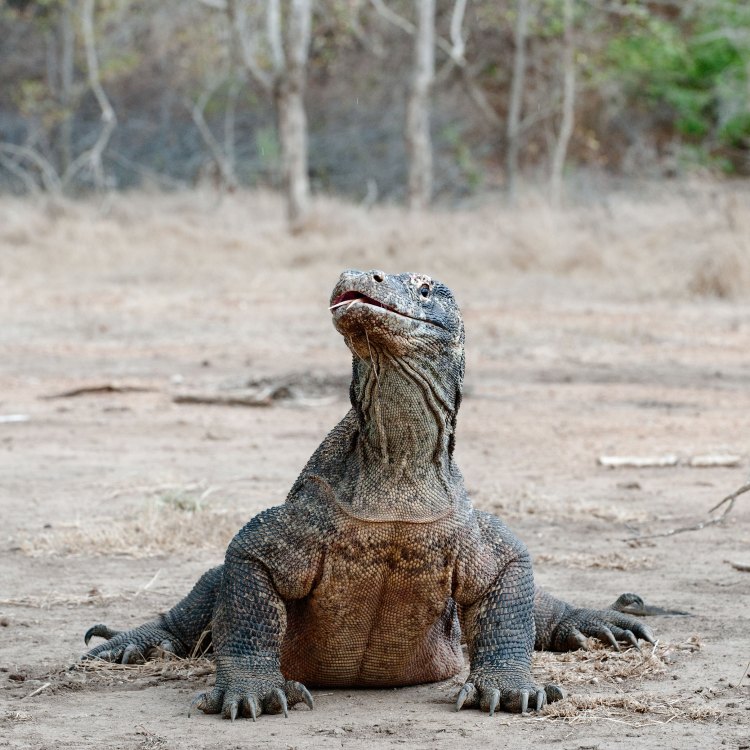
Komodo Dragon
- Adult Size: On average, around 8 to 9 feet (2.5 to 3 meters)
- Average Lifespan: About 20 to 30 years in the wild
- Reproduction: Sexual
- Reproductive Behavior: Mating occurs between May and August
- Sound or Call: Hissing and growling
- Migration Pattern: Non-migratory
- Social Groups: Solitary with minimal social interactions, except during mating season and feeding
- Behavior: Predatory and opportunistic
- Threats: Habitat loss, poaching, and illegal wildlife trade
- Conservation Status: Vulnerable
- Impact on Ecosystem: Top predator, plays a crucial role in maintaining balance in its ecosystem
- Human Use: Tourism and research
- Distinctive Features: Strong limbs, forked tongue, serrated teeth, and venomous saliva
- Interesting Facts: 1. Largest living species of lizard 2. They have a keen sense of smell 3. Komodo dragons can swim long distances
- Predator: Adult Komodo dragons have no natural predators, but juveniles may be preyed upon by larger dragons or other predators
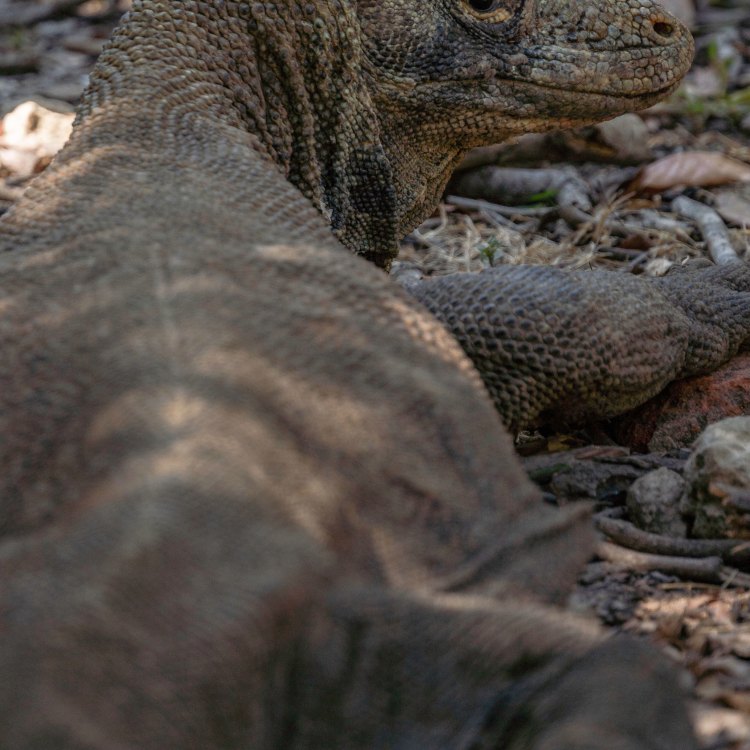
Varanus komodoensis
The Mighty Komodo Dragon: An Apex Predator of Indonesia
The island of Komodo in Indonesia is home to one of the most fascinating and feared creatures on Earth - the Komodo dragon. With its undeniable strength and distinctive features, the Komodo dragon has captured the awe and curiosity of people around the world. In this article, we will explore the unique characteristics and behaviors of this mighty lizard, and understand its role in the ecosystem and its impact on humans.The Komodo dragon, scientifically known as Varanus Komodoensis, is the largest living species of lizard in the world PeaceOfAnimals.Com. Adult Komodos can grow to an average size of 8 to 9 feet (2.5 to 3 meters) and weigh between 150 to 200 pounds. They have a muscular build, strong limbs, and a long tail that helps them balance and move swiftly through their habitat. Their distinctive features include a forked tongue, serrated teeth, and venomous saliva.
On average, Komodos live up to 20 to 30 years in the wild. They have a slow growth rate, reaching sexual maturity between 5 to 7 years. This slow growth rate is due to their unique reproductive behavior. Komodo dragons are sexual reproducers, and mating occurs between May and August, during the dry season. Males engage in a fierce competition for females, using their powerful tails to knock down opponents Kamehameha Butterfly. Once a female is selected, they engage in a mating ritual that involves biting and scratching each other as a form of foreplay.
Unlike most reptiles, Komodo dragons have a high level of parental care. Females lay a clutch of about 20 eggs and cover them with a mound of leaves, soil, and debris to provide protection against predators. These eggs incubate for about 9 months, and once hatched, the mother guards her offspring for about two weeks until they can fend for themselves. This parental care contributes to the survival of the species, as only a few hatchlings reach adulthood due to predation and environmental factors.
Komodo dragons are solitary creatures, and they only interact with other dragons during mating season and when feeding. They are opportunistic predators, feeding on a variety of prey including pigs, deer, water buffalo, and other small mammals. They also scavenge on carcasses, and their unique hunting strategy involves ambushing their prey, delivering a venomous bite, and tracking it until it succumbs to the toxin. This venom is produced by glands in their mouth, and while it may not kill their prey instantly, it causes a slow, painful death. Once the prey is incapacitated, the dragon uses its serrated teeth to tear off chunks of flesh and consume its meal. This predatory behavior has earned them the nickname "land crocodiles."
Despite their ferocity and reputation as top predators, Komodo dragons face several threats in their natural habitat. Habitat loss due to human activities, poaching, and illegal wildlife trade for their skin and body parts are the main factors contributing to their dwindling population. Being solitary creatures, they are also prone to inbreeding, which can lead to genetic disorders and a decline in their immunity to diseases.
As a result, the International Union for Conservation of Nature (IUCN) has listed Komodo dragons as Vulnerable on the Red List of Threatened Species. This means that their population has decreased by at least 30% over the last 10 years and they are at risk of extinction if conservation efforts are not implemented. The Indonesian government has since imposed strict laws and regulations to protect these magnificent creatures, and efforts are being made to educate the local communities on the importance of preserving their natural habitat.
Aside from their role as top predators, Komodo dragons also play a crucial role in maintaining balance in their ecosystem. Being apex predators, they keep the population of their prey in check, preventing overgrazing and protecting plant species from depletion. They also scavenge on carcasses, which helps in nutrient cycling and prevents the spread of diseases. Their presence is vital for the health and sustainability of their ecosystem.
Humans have also been fascinated by Komodo dragons for centuries. The first mention of these giant lizards dates back to the 1910s, and since then, they have become a popular tourist attraction. The Komodo National Park, a UNESCO World Heritage Site, receives thousands of visitors every year, eager to catch a glimpse of this ancient reptile in its natural habitat. Additionally, researchers and scientists have been studying these creatures to learn more about their behavior, biology, and the impact of human activities on their population.
Apart from their appearance, behavior, and role in the ecosystem, there are several interesting facts about the Komodo dragon that make it a truly unique species. For one, they have a keen sense of smell, and their nostrils can detect prey up to a distance of 5 kilometers. This ability, combined with their strong limbs and sharp teeth, makes them highly efficient predators. They are also strong swimmers and can swim long distances, sometimes crossing open sea channels to reach other islands in their range.
In their native habitat, adult Komodo dragons have no natural predators. However, young Komodos may fall prey to larger dragons or other predators such as birds of prey or snakes. This makes their survival until adulthood a challenging feat, and only the fittest and strongest are able to reach maturity.
In conclusion, the Komodo dragon is truly a unique and fascinating creature, with its size, strength, and distinctive features. Its role as an apex predator and its impact on the ecosystem make it a crucial part of its environment. As humans, it is our responsibility to ensure the conservation and protection of this species, and to appreciate its importance in the natural world. Visit the Komodo National Park or support conservation efforts to help preserve this magnificent species for generations to come.
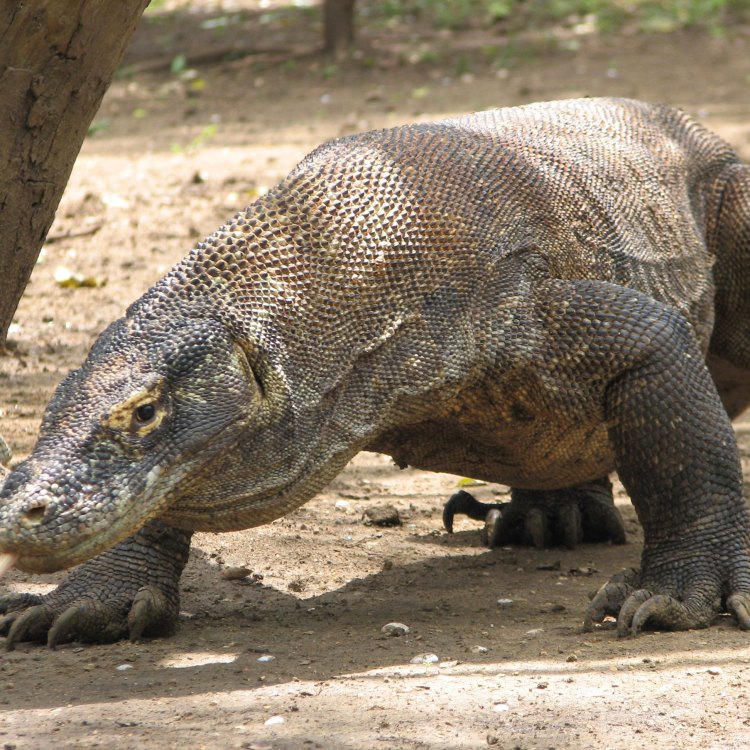
Komodo Dragon: The Majestic Carnivore of Indonesia
Disclaimer: The content provided is for informational purposes only. We cannot guarantee the accuracy of the information on this page 100%. All information provided here may change without prior notice.

